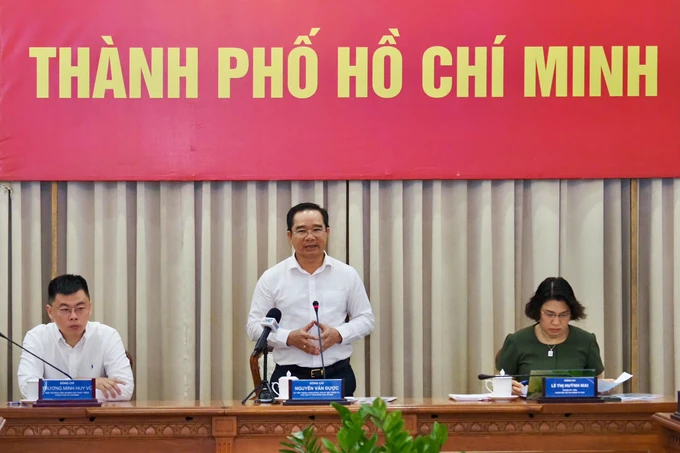HCMC – The U.S. reciprocal tariff of 46% on imports from Vietnam has sent shockwaves through the country, with HCMC’s government leader warning that it could upend the city’s development plans for 2025.
Nguyen Van Duoc, chairman of the HCMC People’s Committee, voiced his concerns at a seminar held today, April 9, to look into the city’s economic growth prospects amid the new U.S. tariff policy.
The U.S. tariff policy would inevitably pose a major challenge to the 8.5% growth target of the city this year.
From an expert perspective, Truong Minh Huy Vu, director of the HCMC Institute for Development Studies, said there would be three possible scenarios after negotiations between Vietnam and the U.S.
In the most pessimistic scenario, the reciprocal tariff would stay unchanged at 46%. Under the second scenario, the tariff would fall to 20–30%. The most optimistic outcome would be a tariff reduction to between 10% and 15%.
If the U.S. maintains the 46% rate on imports from Vietnam, the city’s GRDP would grow by 5.19%, or between 4.63% and 5.75%.
Under the 25% tariff scenario, GRDP would expand 6.79%, or between 6.23% and 7.35%. In the most favorable scenario, where the tariff is revised down to between 5% and 15%, the city’s GRDP could reach 7.93%, or between 7.37% and 8.49%.
The institute outlined several solutions. Among them, on trade measures, it recommended pursuing negotiations to establish a “bilateral solution package” aimed at de-escalating tensions and achieving a mutually agreeable tariff.
It is essential to enhance oversight of origin fraud by cracking down on transshipment of goods from third countries through Vietnam, aiming to ensure transparency in value chains and clearly verify the origin of shipments from Vietnam to the U.S.
Another solution is to facilitate the import of high-tech products and encourage U.S. investment in Vietnam, which would indirectly boost high-tech imports from the U.S. and help narrow the trade deficit between the two countries.
In addition, businesses should diversify their markets, strengthen international cooperation, and make full use of the free trade agreements (FTAs).
At the same time, they should develop intra-regional supply chains within ASEAN, RCEP, and CPTPP; expand cooperation with Mexico and Canada to leverage the U.S.-Mexico-Canada Agreement (USMCA) as an indirect export channel to the U.S.; and capitalize on FTAs with Middle Eastern countries (CEPA, VIFTA) to boost trade with this region.










